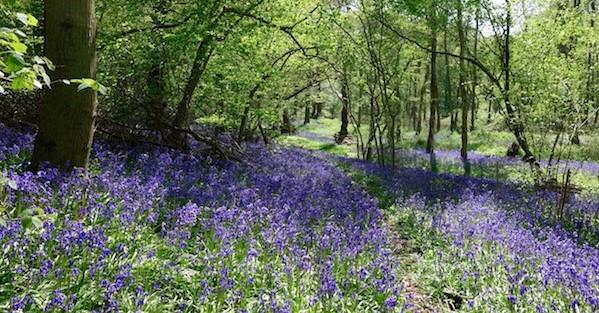
The 'bells are calling...
There are few sights guaranteed to make the heart sing more sweetly than a vibrant blanket of bluebells stretching across a woodland floor. It is a sure sign that spring has truly arrived.
A firm favourite
Regularly voted England’s favourite wild flower, bluebells thrive particularly well in woodlands, and the ancient areas of the Heart of England Forest are no exception. Flowering in mid-April to late May (dependent on weather conditions), they make the most of the sunlight that reaches the woodland floor before the full forest canopy casts its shade. Millions of bulbs may grow closely together in one parcel of woodland, creating a stunning display.
Native or not?
English bluebells have been gracing wooded areas since the early 1500s, and their very existence can indicate an ancient woodland – one that has existed continuously since at least 1600 AD. Looking after ancient woodland is a priority for the Heart of England Forest along with planting new trees. Eventually, of course, planted woodland will become ancient, and hopes are high that the Heart of England Forest will provide continuity and a home for species such as the bluebell for generations to come. The native bluebell has a forceful opponent vying for its space, though: the Spanish bluebell is proving to be one invited guest who has overwhelmed the party!
Victorian times saw the introduction of the Spanish bluebell as a garden plant. It now grows in the wild and crossbreeds with the native bluebell, so the latter has now been designated as a protected species. The differences between the two species are marked: English bluebells are a vivid blue-violet colour with a strong, sweet scent, while the Spanish version is paler and can give off a faintly unpleasant, onion-like smell. The shape differs, too: the outer parts (tepals) of the native bluebell are strongly recurved, while the Spanish bluebell is a gentle bell shape.

Five fun facts about bluebells
- English bluebell sap is sticky and made ideal glue for archers to fasten flight feathers to their arrows in mediaeval wars.
- In 1838 Emily Bronte, author of the classic Wuthering Heights, wrote a poem dedicated to bluebells called, oddly enough, The Bluebell.
- A 2015 poll voted bluebells the favourite flower of England, while Scottish, Welsh and Northern Irish voters preferred the pale yellow primrose.
- The scientific name for the English bluebell is Hyacinthoides non-scripta, which literally translates as an ‘unmarked hyacinth’.
- It is a criminal offence to uproot a wild English bluebell from land on which it naturally grows. Trading their bulbs or seeds can carry a fine of up to £5000.
A rare opportunity
Happening upon a carpet of flowering bluebells in all their glory is a special treat for any countryside wanderer. The public footpath through Bannams Wood offers the chance to catch the show, while there are a few opportunities to see them along the Heart of England Forest’s waymarked routes – walkers following our Haydon Way and College Wood routes may be lucky. However, the surest way to see bluebells in the Forest is on the fundraising Open Day at Alne Wood, which is normally not accessible to the general public, and offers the most spectacular bluebell bonanza of all. See below for details.
A blooming great day out!
Enjoy a rare chance to go ‘behind closed doors’ at the Heart of England Forest’s ancient Alne Wood on Saturday May 4th and experience our Bluebell Wood in all its blooming glory. Wander specially marked routes and marvel at one of nature’s great woodland wonders – a great day out for all the family. Find out how to enjoy a more private viewing with early access and how to get tickets on our events page. Don’t forget your camera!
If you didn't manage to catch our event, check out our virtual tour of this beautiful part of the Forest on our YouTube channel.



